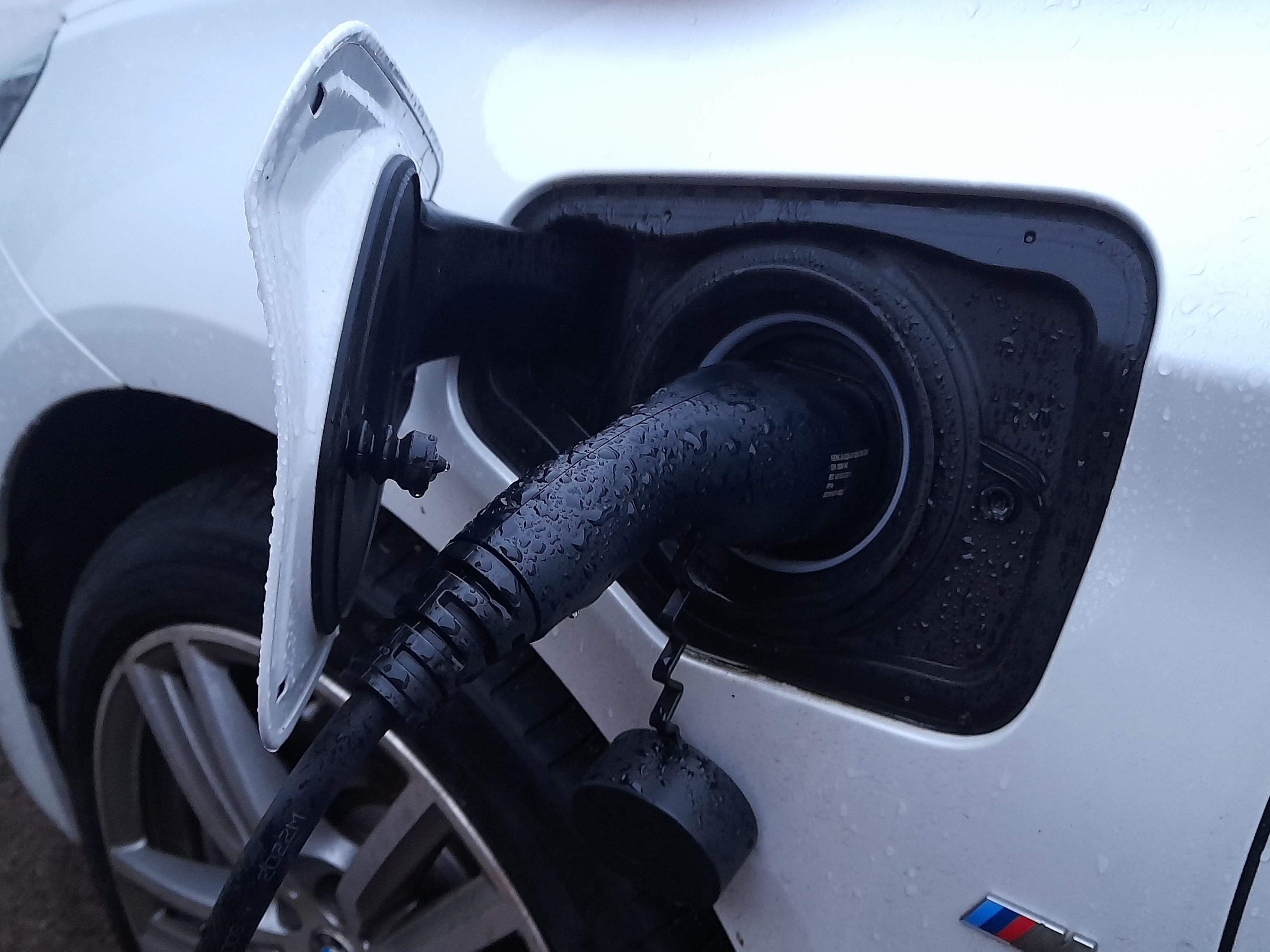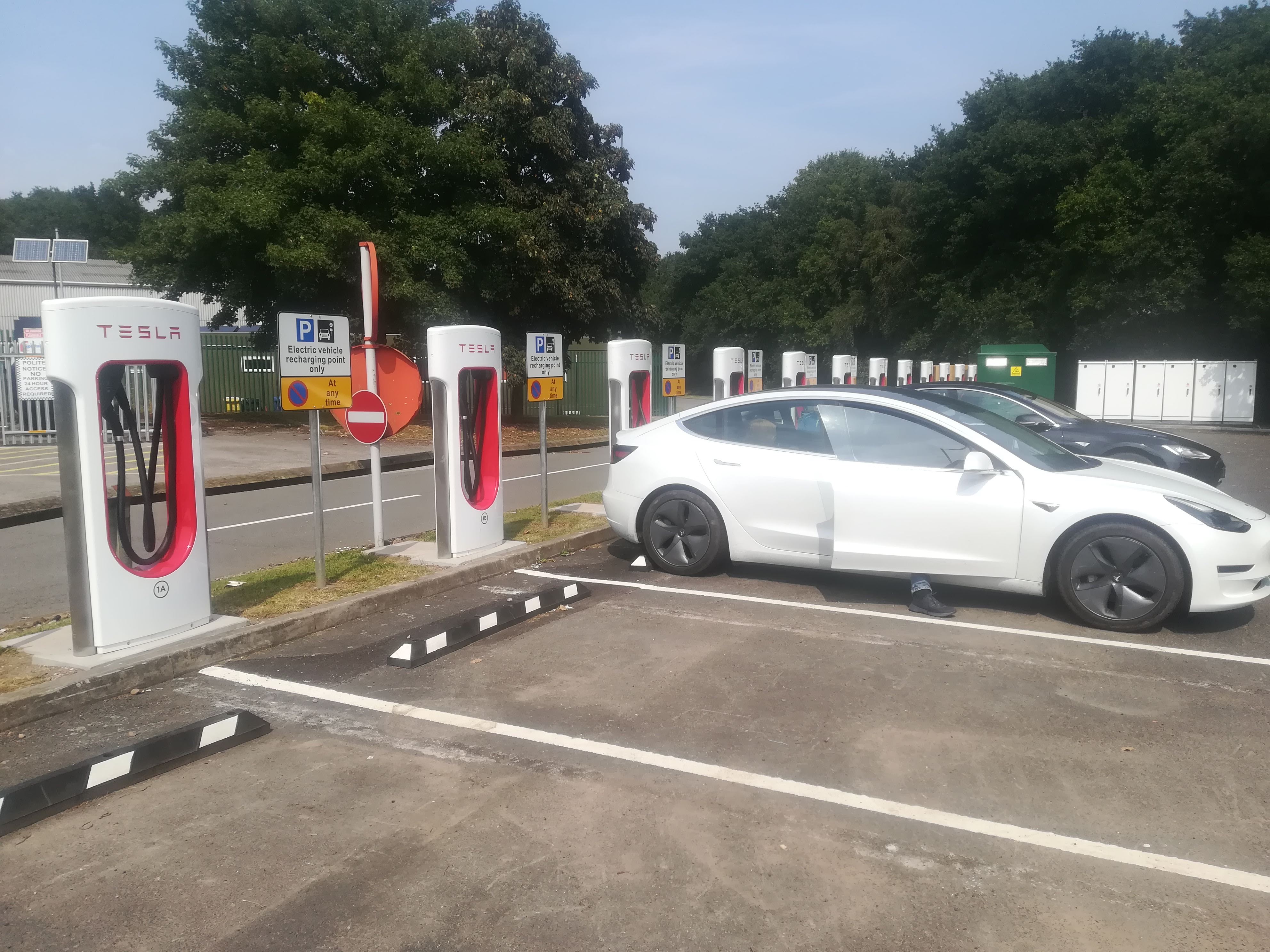Electric Vehicles
Why Make the Move to Full Electric now?
Short distance road transport makes up 11% of global emissions and is a significant impact on climate change. The availability of electric vehicle models and charge point networks is increasingly rapidly.
In the UK, in 2021 45.5% of new cars registered were electric/hybrid/plug in hybrid electric vehicles (PHEVs) – that’s up 28.5% on the previous year; of these 11.6% were fully electric, with the Tesla Model 3 being the best selling model ( in fact the Tesla was second only to the Vauxhall Corsa in sales for all new cars).

Our client director's EV charging
Moving out of the global pandemic, many have become aware of the improvement in air quality (temporarily during lockdown) due to the reduction of fossil-fuelled vehicles on our roads. As well as climate change causing CO2, fossil-fuelled vehicles (particularly diesel) are responsible for creating particulate matter and nitrous oxides that can cause respiratory disorders in adults and children.
In terms of your own carbon footprint, using a full EV that is charged using renewable energy causes carbon emissions of 0gCO2/km (bear in mind that if you use standard grid electricity currently this is about 40gCO2/km – still about 1/3rd of the amount used by an equivalent fossil fuel car. As the grid decarbonises, this will of course get lower and lower.
Legislation is now in place in the UK that will mean that from 2030 all new cars registered can only be fully electric ( to be clear – no new hybrids or PHEVs).
Most of us now will have experienced an electric vehicle – having either driven one or had a ride in one.
Most noticeable is the quietness of the electric car and the lack of smell (and irritation) due to zero tailpipe emissions. Most cars are also quick and very responsive.
Cost of Ownership
Leasing - There are significant tax incentives if you lease an electric vehicle under a company ‘salary sacrifice’ programme. This type of programme is increasingly used instead of old-style company car programmes. Lease costs are taken off an employee’s gross salary. This means that the employee’s tax burden (PAYE and NIC) is then reduced ( by the lease costs). For fossil-fuelled cars, employees would still be hit with high Benefit in Kind (BIK) taxes that (in 2021) can be as high as 37% of the P11D value of the vehicle compared with 1% for full EVs. This makes the EV an exceptionally good candidate as an salary sacrifice option. More so for higher tax bracket earners.
Company car - If you get a company car, you will also benefit again from the very low BIK (tax year 2021, full EVs BIK at 1%, compared with >150g/km CO2 car BIK at 37%) – reducing your tax burden.
Low-emission vehicles eligible for a plug-in grant - GOV.UK
Costs per mile
Running an EV is cheaper than running a fossil fuel car, on the basis of electricity tariff costs vs fuel at the pump.
Based on 800 miles per month (9600 miles per year) it’s estimated that energy (electricity/fuel) costs per year are
Typical Fully Electric Family car £340 per year
Petrol Family car £1241 per year
Electric cars vs petrol | EV cost per mile
Embodied emissions of EVs are lower than combustion engine cars - ICTT Paper, 2021
Servicing and insurance costs are getting competitive now – with less moving parts, there’s less to go wrong and also EV drivers tend to make safer drivers, so premiums can be lower. Make sure your shop around for the best quotes. If you are leasing, this might be bundled and a more cost-effective way of buying.
Charge Points
Domestic - Grants for home-based charging are available for up to £350 for an installation
Charge at Work - Employers are able to get grants for work-based charge points for up to 40 units ( at time of writing 2021, this was £350) . Also, under current arrangements, there are no tax costs as an employee for charging at work (your employer may provide the charge to you for free)
Charging on the go - I only have on road parking – so can’t charge.’

We're charging at the Tesla supercharger
Well good news is that networks are now in supermarkets, close to gyms and car parks that you regularly visit. With just a bit of planning you can get the charge you need for your lifestyle while you shop.
A Great Time to Choose an EV
It’s a great time to be drive an EV – there are increasing ways that you can select to have one, lots of choice of models from the major brands and lots of options for charging at home, work and in the community.
What difference does the country you live in make?
Countries that generate electricity from predominantly renewable energy (e.g. Paraguay, Iceland etc), charging EVs from the mains will have a much lower carbon footprint.
However for countries which have high usage of coal in generating their electricity, the carbon emissions from using electric cars are much higher, and in some cases actually exceed that of petrol and diesel vehicles.
What about end life emissions?
As technology progresses, EV batteries are lasting increasingly longer and may have a second life as domestic storage batteries, so reducing the overall environmental impact.
What's your Car's Carbon Footprint - Work it out with our free to use Carbon Footprint Calculator
Note: Your EV emissions will be covered by your electricity use when you charge from your National Electricity Grid.
